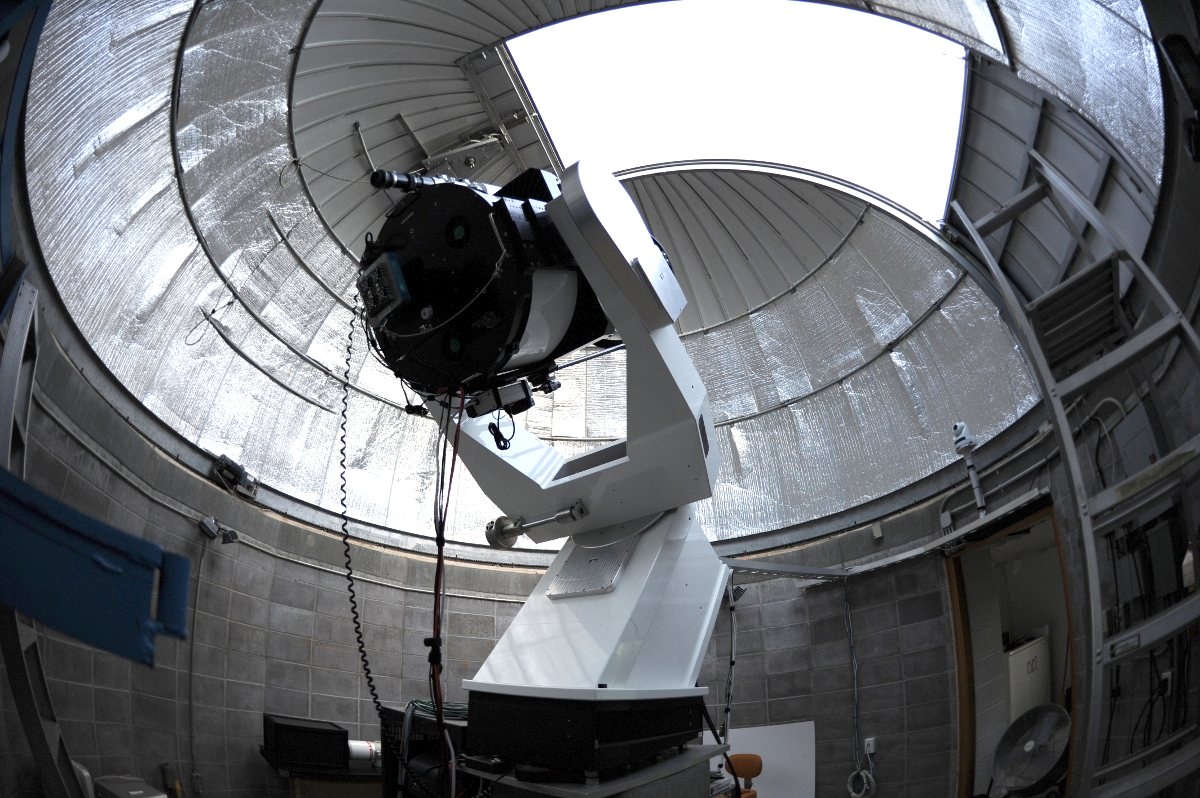

The telescope configured for measurements of exoplanet transit light curves is seen from the north side in this May 2010 photo. Lower portions of the dome have been insulated to reduce daytime heating by radiation from the warm metal dome. A large cooling fan in the doorway mixes cool air during the daytime and promotes rapid equilibration at night. The pan-tilt-zoom network camera located over the doorway allows remote observers to monitor the telescope and dome. The Apogee U16M camera and IFW3 filter wheel are at the focal plane connected to the dome computer system by a dropline cable. The telescope also has a Stellacam III "finder" camera and frame integrator to feed live field of view video to the network. The small echelle being prepared for testing is in the background
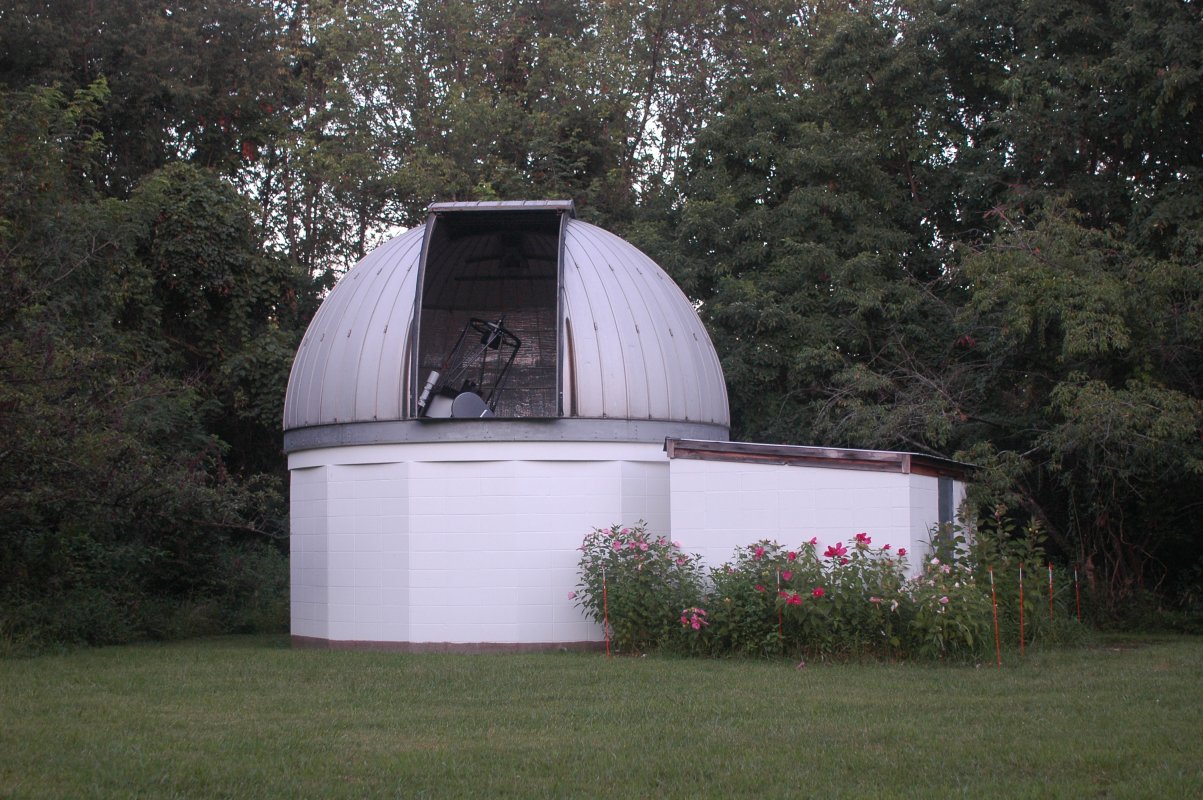
The exterior of the Ash dome building in the summer of 2009 shows the telescope through the open shutter. Perennial hibiscus bloom in late summer and have thrived next to the building for over 10 years. While there are many trees near the site, they are trimmed as needed to keep a clear horizon down to 30 degrees. This was the first telescope enclosure at Moore Observatory, and it housed the original "Moore" 20-inch telescope from 1978 to 2006. The control room was added after the original construction.
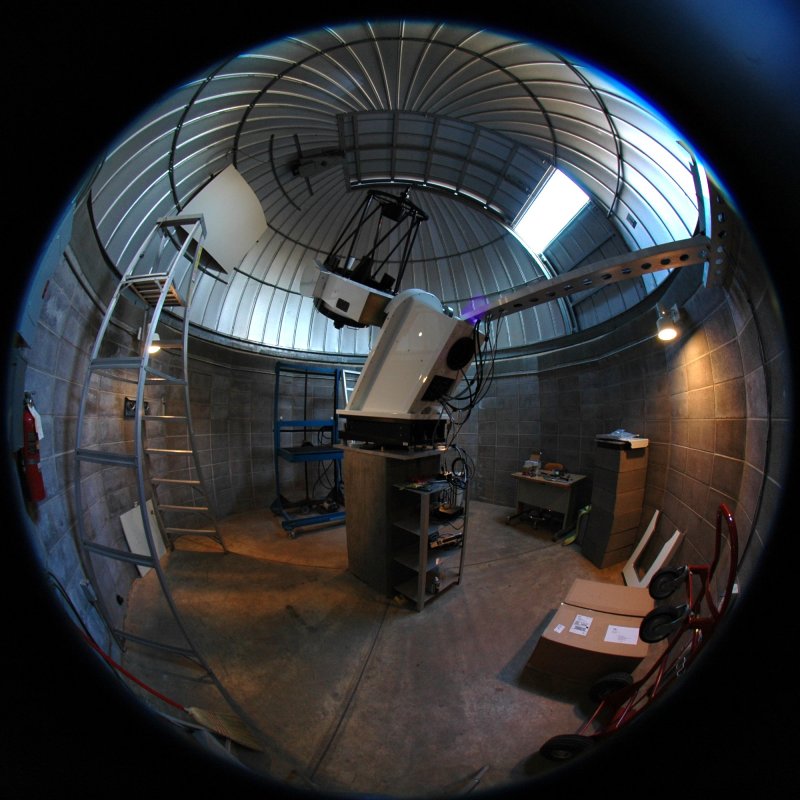
The interior of the dome is seen soon after the encoder upgrade in February 2007.
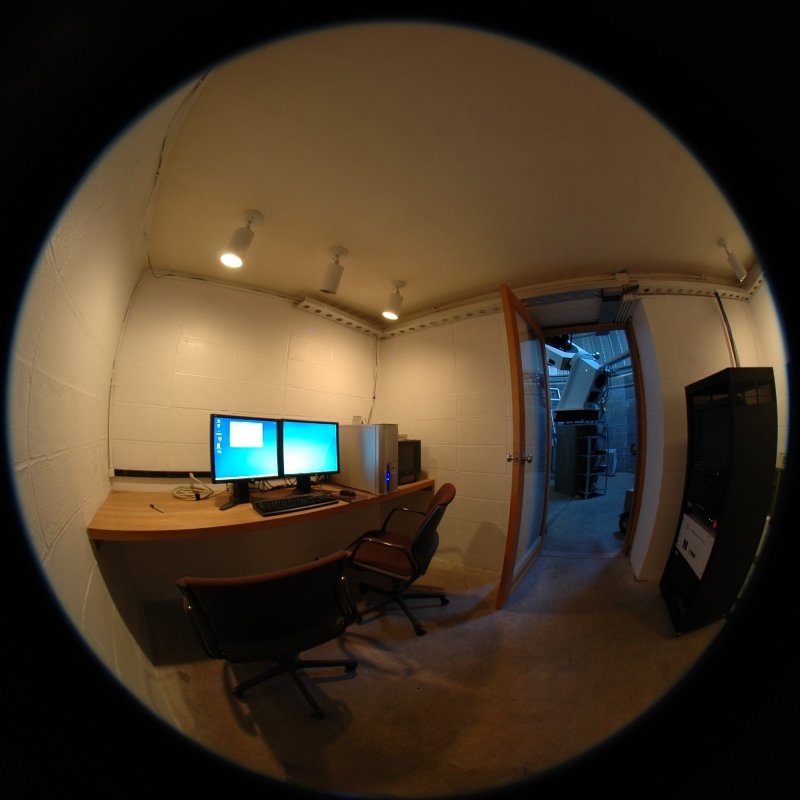
The telescope control room is seen as it was in February 2007. The instrument rack on the right was later moved to the dome next to the pier to minimize electrical interference in the encoder lines. The telescope can be operated remotely from the main building. Data collection is automated and monitored by the observer during exoplanet transit measurements.
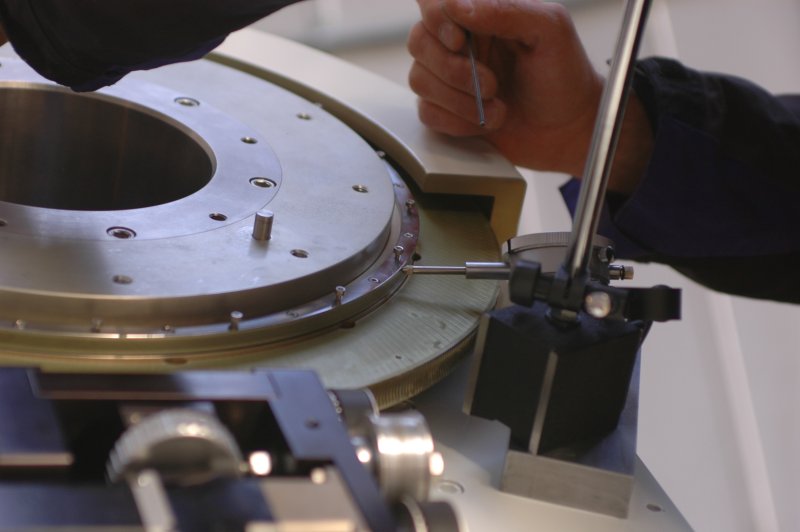
The new RA encoder is being centered in February 2007.
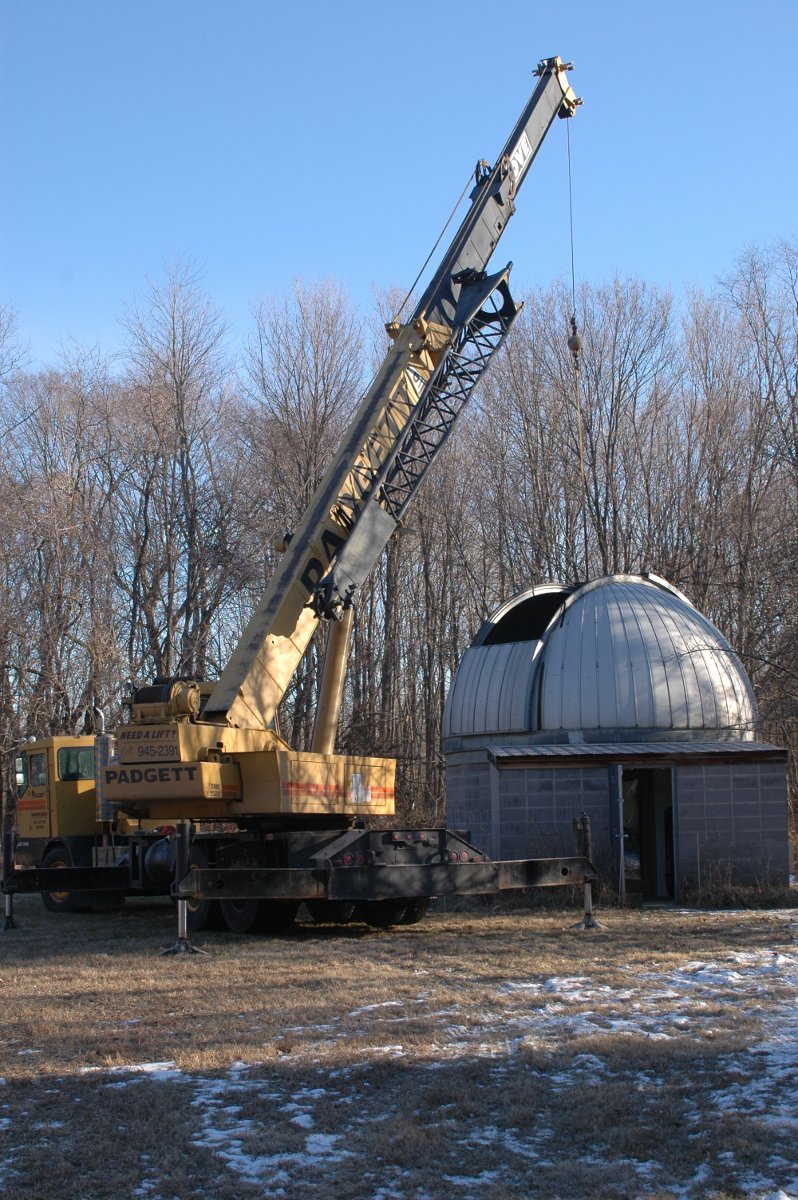
In February 2007 RC Optical returned to install an improved RA encoder that had less sensitivity to temperature extremes. It was only a few degrees above 0 F at the time the crane was on site to lift the fork off the mount. The bare concrete block was painted in 2008 with a highly reflective insulating white paint to minimize heat gain during the day.
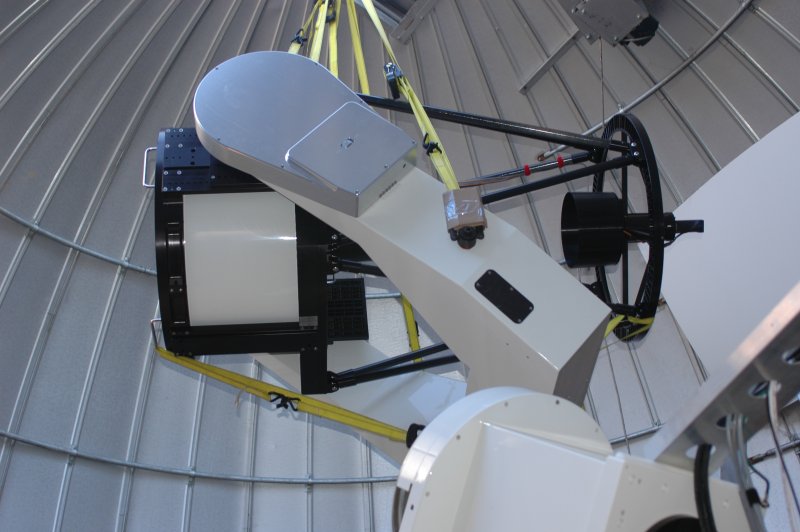
The OTA with the fork was removed and held by a crane during the encoder work in February 2007. The encoder is a ring that is mounted at the north end of the polar axis.
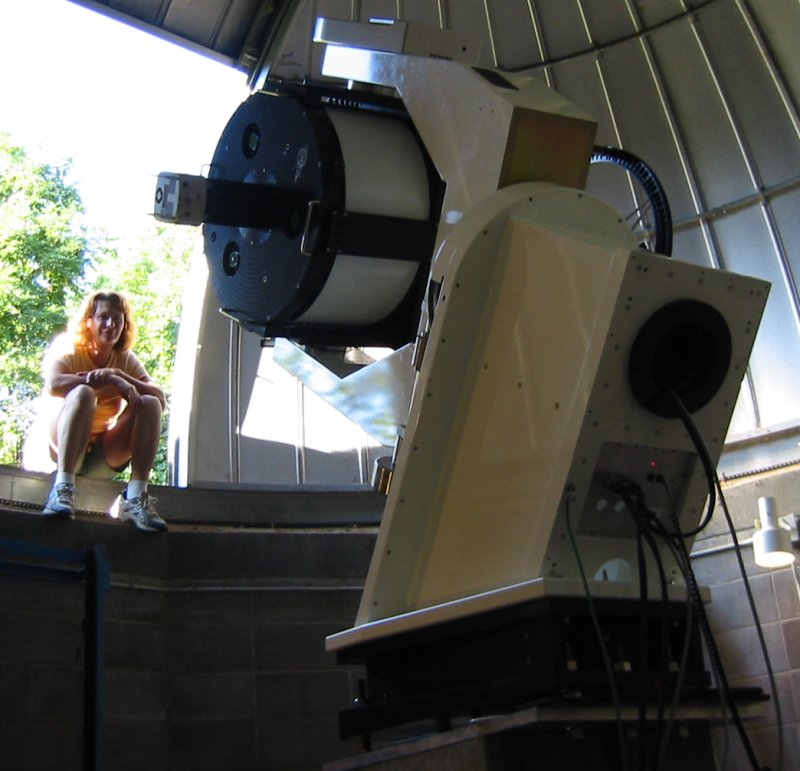
Karen Collins, a research astronomer specializing in exoplanets, helped with the telescope installation in August 2006.
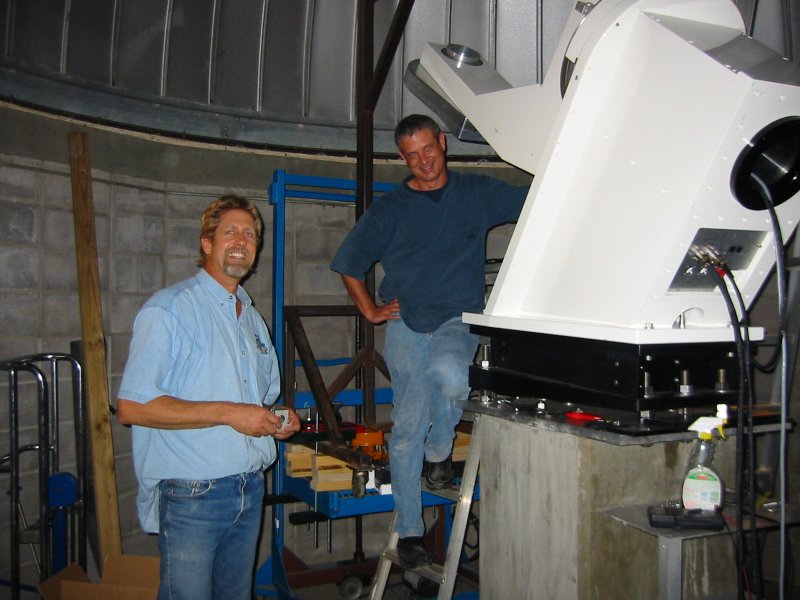
Brad Ehrhorn (left) and Dan Azari (right) of RC Optical came to the site to help with the installation in August 2006. The original Moore telescope pier was adapted to the RC24 mount by adding a 1-inch thick aluminum plate seen here. The polar altitude of the mount is adjusted by the stand-off bolts on this plate. Polar azimuth is adjusted by a precision rotation provided in the mount. The pier extends 4 feet below the floor where it expands to a 4-foot wide base.
